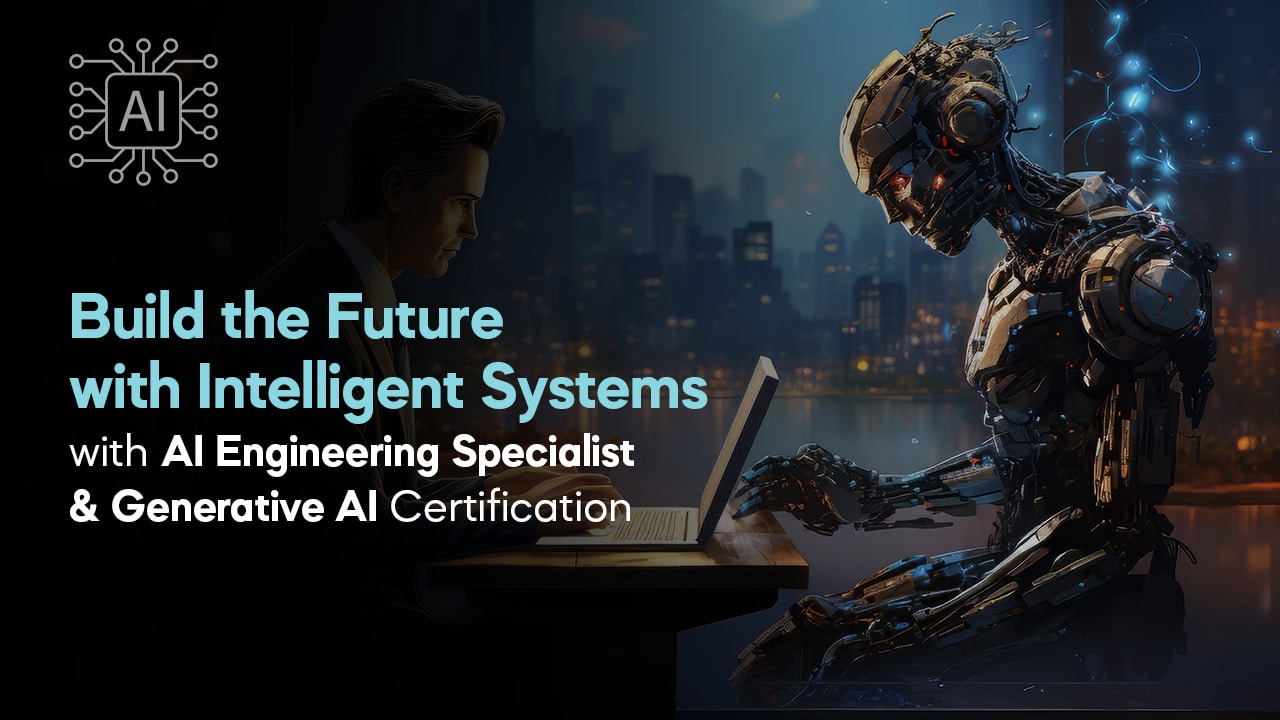AI Engineering with Generative AI (Batch-01)

About Course
AI Engineering Specialist – Comprehensive Course
The AI Engineering Specialist course is a meticulously designed, in-depth program that equips learners with the essential skills and knowledge required to master Artificial Intelligence, Machine Learning, and Deep Learning. This course takes a structured approach, starting from Python programming fundamentals and advancing through data science, mathematical foundations, machine learning algorithms, deep learning frameworks, and real-world AI applications.
The journey begins with Python programming basics, where students gain proficiency in writing efficient Python code, handling data structures, working with files, and structuring their code using functions and modules. This foundational knowledge paves the way for Data Science Essentials, covering NumPy, Pandas, data cleaning, aggregation, and visualization techniques to prepare learners for real-world data manipulation and exploration. The curriculum also includes Mathematics for Machine Learning, ensuring a solid grasp of linear algebra, calculus, probability, and statistics, which are crucial for building AI models.
As students progress, they delve into Probability and Statistics for Machine Learning, covering probability theory, hypothesis testing, statistical inference, and regression analysis. The course then transitions into Machine Learning, introducing supervised learning, regression models, classification techniques, model evaluation, and advanced algorithms like k-Nearest Neighbors (k-NN). Feature engineering, data preprocessing, and hyperparameter tuning are also explored in-depth to enhance model performance.
A significant portion of the program is dedicated to Advanced Machine Learning and Model Optimization, where learners explore ensemble learning techniques like bagging, boosting, XGBoost, and LightGBM. Additionally, they will master cross-validation, hyperparameter tuning, and automated optimization methods. The course then shifts focus to Neural Networks and Deep Learning, covering essential concepts such as forward propagation, activation functions, backpropagation, and optimization techniques. Learners gain hands-on experience with frameworks like TensorFlow, Keras, and PyTorch, enabling them to build deep learning models for various applications.
Specialized topics such as Convolutional Neural Networks (CNNs) for image recognition, Recurrent Neural Networks (RNNs) for sequence modeling, and Transformers and Attention Mechanisms for natural language processing are also covered. Students will work on projects involving text generation, image classification, sentiment analysis, and language modeling. Additionally, the course includes Transfer Learning and Fine-Tuning, where learners leverage pre-trained models to enhance AI applications across domains.
The curriculum further expands into AI Model Deployment and Production, including TensorFlow Serving, TFX pipelines, model validation, and scaling AI solutions using Kubernetes. Learners will also explore LangChain for Language Models, implementing projects like chatbots, sentiment analysis tools, and document retrieval systems. The course concludes with hands-on projects in Computer Vision, Natural Language Processing, Recommender Systems, Generative Adversarial Networks (GANs), and Reinforcement Learning, ensuring that students are industry-ready with real-world AI expertise.
By the end of this program, participants will possess a comprehensive understanding of AI Engineering, from fundamental programming to advanced deep learning architectures and model deployment strategies. This course is ideal for aspiring AI engineers, data scientists, and professionals seeking to gain cutting-edge skills in artificial intelligence and machine learning. Whether you are a beginner or an experienced practitioner, this course will provide the tools, techniques, and hands-on experience needed to thrive in the AI-driven world.
Course Content
Introductory Class
-
AI Engineering (Batch-01) – (Introductory Class)
01:53:09